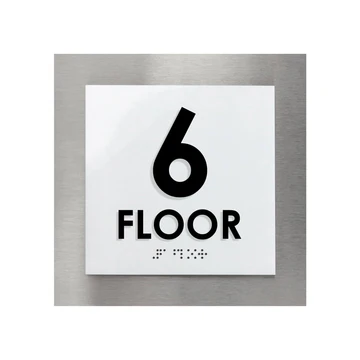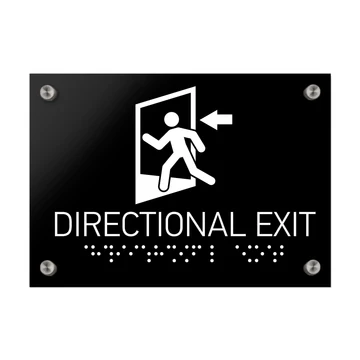Interior wayfinding is a very important aspect of any building, especially one with public access. Visitors and customers want to have the possibility to comfortably navigate in a public environment to satisfy their needs. That is why a complex or non-understandable wayfinding system inside the facility will only complicate things and spoil the customer experience.
Wayfinding signage used in different buildings consists of sets of different signs that serve different purposes. Floor signs are just one of the multiple categories to consider. Let us take a closer look at the meaning of different types of floor signs.
Index Signs

First of all, a visitor needs to be able to identify the floor he or she is located on at the moment. That is why each floor should be marked with a particular number. The key thing about floor index signs is that they should not include much information. A single number on a plate would be completely enough to number a floor. For better accessibility, you can order signs with Braille fonts to make them identifiable for individuals with severe vision disorders or even complete vision loss.
Directional Signs
The other popular type of floor signs are directional plaques. As you can guess, these plates are used to point in the necessary directions inside the building. These signs might be quite versatile. By this, we mean that floor directional signs not only identify floors but also certain areas inside the building. For example, in a hospital, a floor directional sign might point in the direction of the operational room.

Directional signs are quite important in terms of responding to emergencies, like fire. Strategic placement of directional signs helps visitors quickly identify evacuation routes, which prevents mass chaos and panic in situations that require a cool mind and immediate reaction. That is why the use of evacuation signs is often regulated as strictly as the compliance of building planning itself.
Informational Signs
Informational signs are used to communicate certain messages to visitors. These messages might either inform about the availability of certain products and services or warn visitors that certain activities are strictly prohibited in this setting. Thus, informational signs can also include the subcategory of prohibitive signs but this is a matter for another discussion. Among the most widely used informational signs, in public spaces, you can often see the following plaques:
- Fire Information Signs
- Stairs Information Signs
- Dining Room Information Signs
- Cleaning Room Information Signs
- Kitchen Information Signs
- Shower Information Signs
- Trash Bin Information Signs
- Cafeteria Signs
- Custodian Signs
- Janitor Signs
- Lounge Signs
- Phone Signs
The Bottom Line
To sum it up, floor signage is an extremely important part of the public space organisation. Their correct use ensures accessibility to basic amenities and target services/products. Thanks to them, your visitors will feel safer and more confident, which will greatly contribute to their overall level of satisfaction.
- 0shares
- Facebook0
- Pinterest0
- Twitter0
- Reddit0



